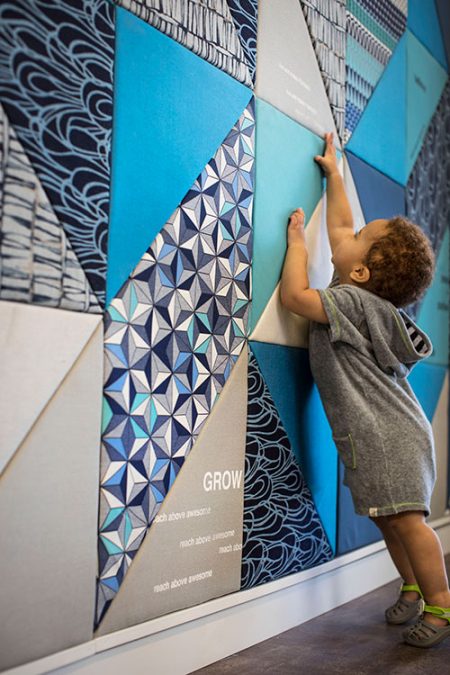Medical waiting rooms have a reputation for being sterile and utilitarian, rather than comforting and nurturing. And there’s a gap in the research about whether elements such as seating arrangement and choice, artwork and cultural relevancy are important factors in whether waiting room design can affect patient and staff satisfaction.
Enter Gensler, a global architecture firm with a highly skilled healthcare design practice; Unity Health Care, a well-respected network of community healthcare centers in Washington, D.C.; and Sunbrella, a textile manufacturer known for innovative, high-performance fabrics. The three organizations agreed more documented research in healthcare facility waiting rooms would be beneficial for both the Unity Health Care design project as well as future waiting room projects.

- Will furniture arrangement affect communication?
- Will community engagement in the design process impact design solutions?
- Will diversity in furniture type influence patient seating choice?
- Is there a preference between woven and vinyl upholstery?
- Does art representative of the community increase staff happiness?
- Will an enhanced waiting room decrease perceived wait time?
- Does art inspired by the community improve the waiting experience?
Tama Duffy Day, a Gensler principal designer and health and wellness practice area leader, and Bonny Slater, regional health and wellness leader at Gensler, spearheaded the design initiative. Duffy Day and Slater agreed that while the original Brentwood waiting room did its job, the design team had an opportunity to provide more comfort and an element of pleasure or joy to patient visits that otherwise could be difficult or stressful.

The Approach
During the course of research, the design team hosted community and staff events, surveyed staff and observed people using the waiting room to gather insights into what was important to patients and staff who visit and work at the health center. These insights drove the design process that resulted in a personalized, nurturing and better performing space.
After analyzing the pre-intervention data, three clear priorities emerged.
- Understand and reflect the community
- Clarify and support key processes in the waiting room (check-in, registration, etc.)
- Define personal space and encourage communication among patients
“The most important aspect of the design intervention was how we included health center staff and patients in the design process,” said Bonny Slater, a regional health and wellness practice area leader at Gensler. “The resulting design reflects their input on color, pattern and the story of the community, and by weaving these elements into the space, it inherently feels more welcoming to the people who visit and work there. The data we collected supports this community-focused approach to design.”

The Results
At the end of the project, both the designers and client were happy with the results. The key takeaway from the experience was the importance of involving the patients and staff — the end users of the space — in the design process. They are, after all, the inspiration for everything designers do, Duffy Day said.
“The hypothesis was whether a waiting area designed with intention and with community engagement could increase patient satisfaction and improve the patient experience,“ Duffy Day said. “And all of the survey results we have so far indicate that it does and it has.”
This overview of the results shows the design team proved all of the research hypotheses. We will feature a deeper dive into each one on the blog over the next month.
Will furniture arrangement affect communication?
Yes. Post-intervention observation showed a 100 percent increase in communication between patients in the new waiting room.
Will community engagement in the design process impact design solutions?
Yes. Input from patients and staff directly influenced the color palette, upholstery patterns and artwork in the space.
Will diversity in furniture type influence patient seating choice?
Yes. Post-renovation observations showed a clear preference for sofa style bench seats.
Is there a preference between woven and vinyl upholstery?
Yes. Researchers found woven fabric upholstery is preferred over slick “vinyl” upholstery. In a post-occupancy survey, woven fabric upholstery seats were preferred 8 to 1.
Does art representative of the community increase staff happiness?
Yes. Staff happiness increased by 45 percent according to self-reported surveys.
Will an enhanced waiting room decrease perceived wait time?
Yes. Patient interviews suggest happiness with the changes, and complaints about wait time decreased by 25 percent.
Does art inspired by the community improve the waiting experience?
Yes. In self-reported post-occupancy surveys, researchers found a 45 percent increase in employee happiness with the addition of community-inspired art in the waiting area.